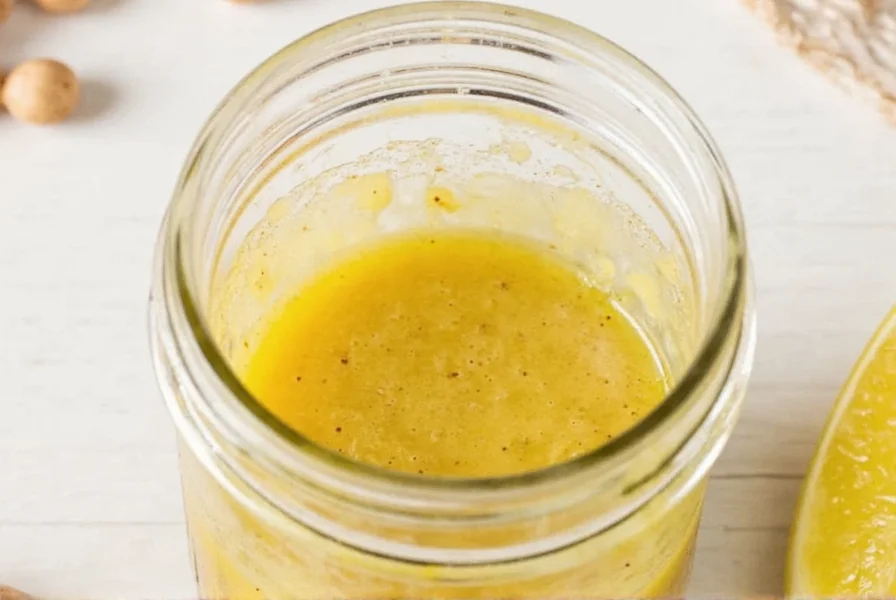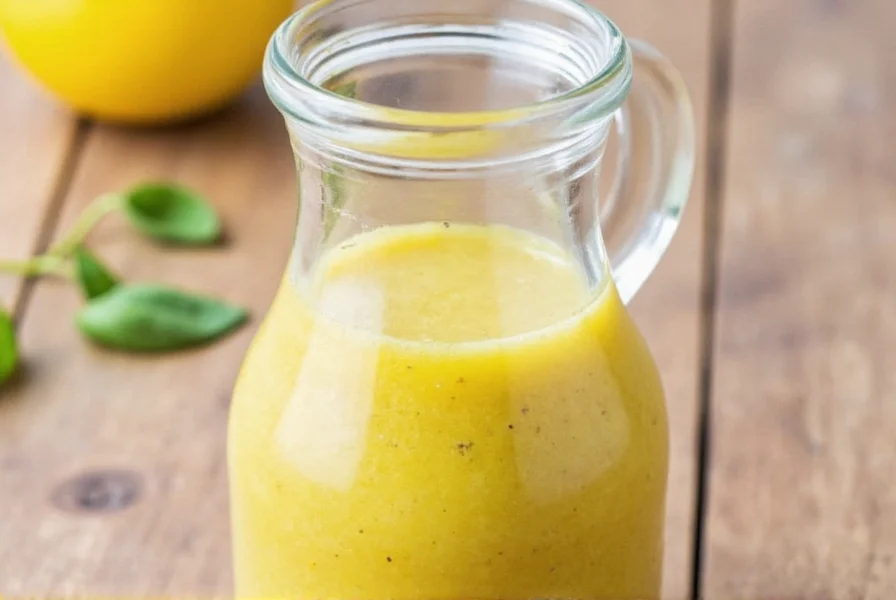Creating a vibrant ginger salad dressing from scratch transforms ordinary salads into extraordinary meals. Unlike store-bought versions filled with preservatives and excessive sugar, this homemade recipe delivers authentic Asian-inspired flavor with fresh ingredients you control. The zesty kick from real ginger pairs perfectly with leafy greens, grilled proteins, and vegetable medleys.
Why Fresh Ginger Makes All the Difference
While powdered ginger offers convenience, fresh ginger root provides a complex flavor profile that elevates your dressing. The volatile oils in freshly grated ginger deliver a bright, spicy warmth that dried alternatives simply can't match. When selecting ginger, look for firm roots with smooth skin and minimal wrinkles. Store unpeeled ginger in the refrigerator for up to three weeks or freeze for longer storage.
Essential Ingredients Breakdown
Understanding each component's role helps you master this easy ginger salad dressing recipe. The balance between acidic, salty, sweet, and oily elements creates a harmonious dressing that coats salad ingredients perfectly.
| Ingredient | Function | Substitution Options |
|---|---|---|
| Fresh ginger root | Provides signature spicy warmth and aromatic complexity | 1 tsp ground ginger (less potent) |
| Rice vinegar | Delivers mild acidity that balances richness | Apple cider vinegar or white wine vinegar |
| Soy sauce | Contributes umami depth and saltiness | Coconut aminos (for gluten-free) |
| Sesame oil | Adds nutty aroma and authentic Asian flavor | None (essential for authentic taste) |
| Honey | Counteracts acidity with natural sweetness | Maple syrup or agave nectar |
Step-by-Step Preparation Guide
Follow these simple steps for a perfectly emulsified ginger dressing every time:
- Peel and finely grate 2 tablespoons of fresh ginger using a microplane
- In a medium bowl, combine grated ginger with 3 tablespoons rice vinegar
- Add 2 tablespoons soy sauce, 1 tablespoon sesame oil, and 1 tablespoon honey
- Slowly drizzle in 1/4 cup olive oil while whisking vigorously
- Taste and adjust seasoning as needed (more ginger for heat, honey for sweetness)
- Transfer to a jar with tight-fitting lid and shake well before each use

Customization Options for Every Palate
This versatile ginger salad dressing recipe adapts beautifully to different flavor preferences and dietary needs. Try these variations to create your perfect blend:
- Spicy ginger dressing: Add 1 teaspoon sriracha or 1/4 teaspoon red pepper flakes
- Creamy ginger dressing: Blend in 2 tablespoons Greek yogurt or tahini
- Fruit-infused version: Substitute honey with 2 tablespoons fresh orange juice
- Low-sodium option: Use reduced-sodium soy sauce and increase rice vinegar slightly
- Vegan adaptation: Replace honey with maple syrup
Storage and Usage Tips
Proper storage maintains your homemade ginger dressing's freshness and flavor. Store in an airtight container in the refrigerator for up to seven days. The natural separation of oil is normal—simply shake well before each use. For longer storage, freeze in ice cube trays then transfer cubes to freezer bags for up to three months.
When dressing salads, apply the dressing just before serving to prevent wilting. Use approximately 2 tablespoons per serving of salad. This Asian ginger dressing recipe also works beautifully as a marinade for chicken, tofu, or vegetables—allow proteins to marinate for 30 minutes to 2 hours before cooking.
Perfect Pairings for Your Ginger Dressing
Certain ingredients complement ginger dressing's distinctive flavor profile. Create balanced salads with these ideal combinations:
- Mixed greens with mandarin oranges, almonds, and grilled chicken
- Shredded cabbage, carrots, and edamame for an Asian slaw
- Spinach, strawberries, and goat cheese with pecans
- Quinoa salad with roasted sweet potatoes and chickpeas
- Simple cucumber salad with red onion slices
Troubleshooting Common Issues
Even simple recipes can present challenges. Here's how to address common ginger dressing problems:
- Dressing too spicy: Balance with additional honey or a splash of water
- Dressing too salty: Add more vinegar or a squeeze of fresh citrus
- Dressing too thick: Thin with water or additional vinegar, 1 teaspoon at a time
- Dressing separates: Ensure proper emulsification by whisking while slowly adding oil
- Lacking depth: Let dressing sit for 30 minutes before serving to allow flavors to meld
Frequently Asked Questions
How long does homemade ginger dressing last in the refrigerator?
Properly stored in an airtight container, homemade ginger salad dressing maintains freshness for 5-7 days in the refrigerator. The natural separation of ingredients is normal—simply shake well before each use. For optimal flavor, consume within the first five days.
Can I make this ginger dressing without sesame oil?
While sesame oil contributes authentic Asian flavor, you can substitute it with additional olive oil. However, the dressing will lack the distinctive nutty aroma. For a closer approximation, add 1/2 teaspoon toasted sesame seeds blended into the dressing to capture some of that essential sesame flavor without the oil.
What's the best way to grate fresh ginger for salad dressing?
A microplane grater works best for ginger salad dressing as it creates fine, almost paste-like ginger that fully incorporates into the dressing. The small holes extract maximum flavor and juice while minimizing fibrous bits. If using a standard box grater, choose the smallest holes and press firmly to extract all flavorful juices.
Can I use this ginger dressing as a marinade?
Absolutely. This ginger dressing makes an excellent marinade for chicken, salmon, tofu, or vegetables. For proteins, marinate for 30 minutes to 2 hours—avoid longer periods as the acidity can begin to 'cook' the surface. The ginger's natural enzymes help tenderize meats while infusing them with flavor.
Why does my ginger dressing separate in the refrigerator?
Separation occurs because oil and vinegar naturally resist mixing. This healthy ginger dressing contains no emulsifiers, so separation is normal. Simply shake vigorously before each use to temporarily recombine the ingredients. For a more stable emulsion, whisk more vigorously while slowly drizzling in the oil, or add 1 teaspoon of Dijon mustard which helps bind the ingredients.











 浙公网安备
33010002000092号
浙公网安备
33010002000092号 浙B2-20120091-4
浙B2-20120091-4